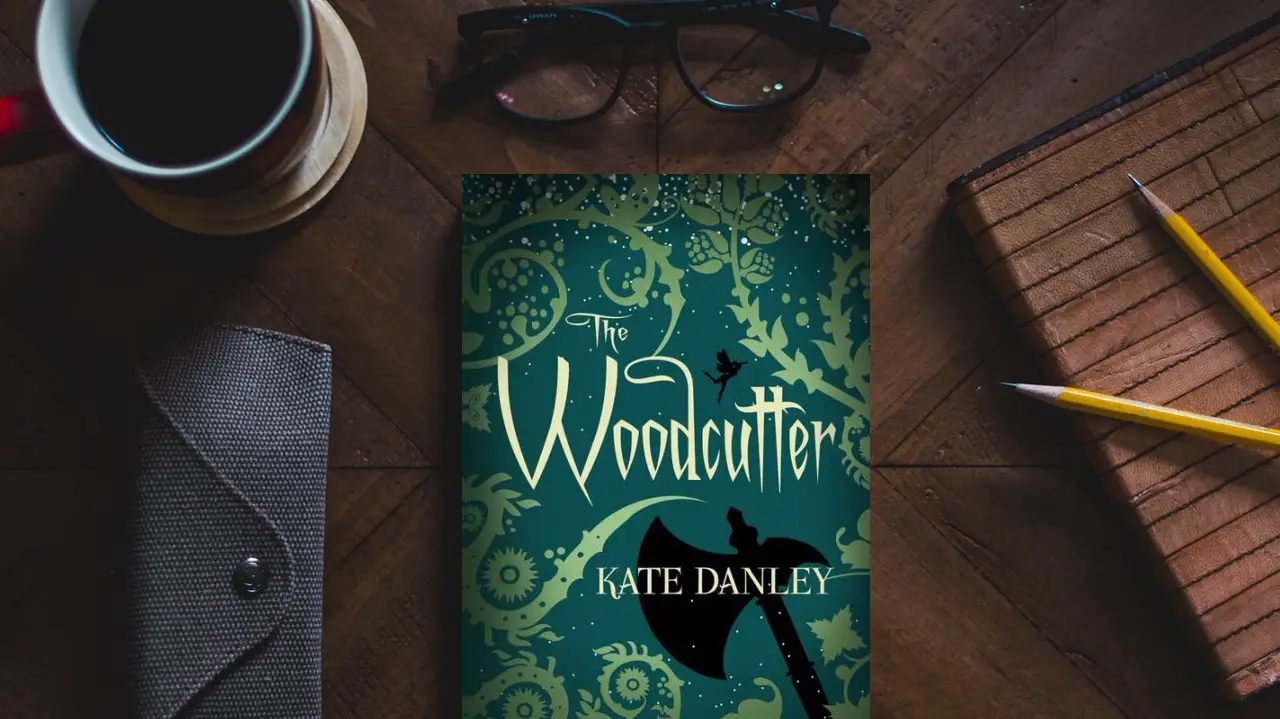The Woodcutter is the keeper of the peace between the Faerie realms and the magical, human kingdoms. But all is not right in the Wood and the Twelve Kingdoms. A young woman with chipped glass slippers lies dead in the Wood, without even a bruise to indicate the cause of her demise. A Wolf is loose. Only the Woodcutter can catch him and uncover his employers, and every clue the Woodcutter finds reveals a more sinister plot than previously imagined.
The Woodcutter by Kate Danley fuses popular fairy tales, mythology, and folk tales into an unforgettable story. It is a mystery, not a romance; but like most fairy tales, the power of true love is a major theme. Such love overcomes the natural, untamed magic all royals are born with. For a Wolf that devours untamed magic, true love is the only thing that can thwart him.
Another prominent theme is the negative effects of drugs, which exist in the form of pixie dust—a powder that makes users delirious, blissful, and quickly addicted. To harvest the dust, pixies must be captured and forced to shed the dust, slowly killing them. The book repeatedly shows the repercussions of both consuming and harvesting the dust. Some people enjoy the positive feelings too much to stop, and others wish to use the dust’s magic and the addiction of others to their own advantage. Though not a perfect allegory, pixie dust is easily comparable to specific drugs in real life and serves as a warning to those who might consider taking those drugs.
The plot of The Woodcutter at first seems to be heading nowhere. The main character must embark on a quest to kill the Wolf that keeps murdering innocents in the Wood. Yet the Woodcutter continues to be sidetracked by the people he encounters, who each represent one or more of the classic fairy tales, folk tales, or mythology. The Woodcutter is a kind man and helps every individual in his path, but as the story progresses, it becomes apparent that each instance of him helping someone is essential to the story. All the minor conflicts that seemed irrelative are instead expertly woven into the story to create a masterpiece.
The way Kate Danley combines each of these elements is a great example for writers to imitate. It demonstrates how to use every scene in a story for a purpose pertaining to the larger plot. Each of the fairy, folk, and mythological tales are interesting stories, but they need something to tie them all together. The Woodcutter does this by using the overall plot to generate a reason for each of the fairy tales to be a part of the novel. No scene is inconsequential to the plot or development of the story and characters, though it does not appear so at the beginning.
The Woodcutter is a clever book that blends a multitude of beloved tales into an intriguing mystery. The themes are relevant to modern readers, and the suspense is more than sufficient to hold anyone’s attention.


Oh, I loved this review, Emily. It sounds like I’ll have to check this one out. 🙂
Great! Do so.